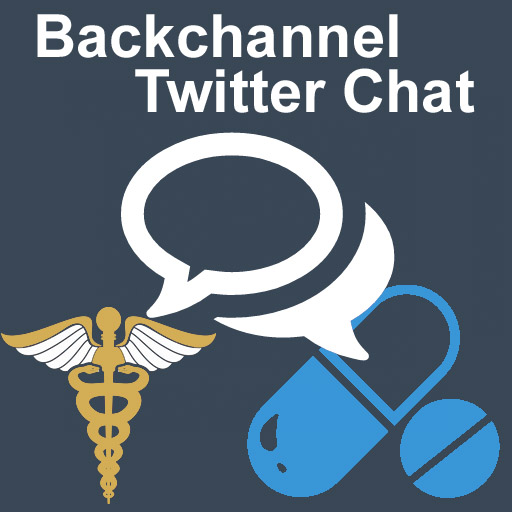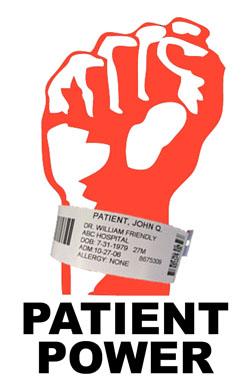Vol. 14, Issue No. 6: September 2015 – EXECUTIVE SUMMARY
Pharma’s Use of Medical Conference Twitter Hashtags Is It “Backchannel” Promotion That Needs to be Curbed? Twitter is becoming a common adjunct to major medical conferences around the world. Health-care professional (HCP) attendees and outside observers (including media and patients) can follow the medical society sanctioned online discus-sion via the official conference hashtag such as the #ERS2014 hashtag for the 2014 European Respiratory Society (ERS) Annual Congress.
Twitter is becoming a common adjunct to major medical conferences around the world. Health-care professional (HCP) attendees and outside observers (including media and patients) can follow the medical society sanctioned online discus-sion via the official conference hashtag such as the #ERS2014 hashtag for the 2014 European Respiratory Society (ERS) Annual Congress.
This is a concern for medical societies that depend on the income generated by these events. Related to that is the concern that commercial entities can “hijack” the official conference hashtag to exert their commercial influence over physical and virtual attendees before, during, and after the conference. A study by a group of academic physicians (the #MICEproject) examined the use of Twitter by commercial entities and proposed safeguards to limit pharmaceutical “detailing” and to “bring the medical community closer to establishing guidelines for third party activities in Twitter back-channels.”
This article discusses the pros and cons of those proposed safeguards.
Topics (partial list):
- Pharma Has Its Own Hashtags
- The #MICEproject
- Why Exclude Patients from Medically-focused Chats?
- Proposed Safeguards
- Should It Be Regulated?
- Chart: Preliminary Results from the PMN Medical Conference Hashtag Survey
Download the full article (PDF file) here:
www.pharma-mkting.com/news/pmnews1406-article01.pdf Celebrities + Social Media Balancing Benefits and Risks The worth of a celebrity brand spokesperson such as Phil Mickelson is based on the free publicity — press coverage — the celeb can generate, sometimes even before the deal is announced.
The worth of a celebrity brand spokesperson such as Phil Mickelson is based on the free publicity — press coverage — the celeb can generate, sometimes even before the deal is announced.
Almost any publicity is good publicity. Occasionally, however, the publicity is so bad — e.g., as in the Paula Deen/Victoza case — that there is no further benefit to the brand associated with the celebrity. The only thing left to do is to end the relationship ASAP.
Then there is just plain “bad” publicity such as when the celebrity violates FDA regulations regarding promotion of a brand name drug as was the case when Kim Kardashian promoted Diclegis, a prescription morning-sickness medicine, via Instagram, Facebook, and Twitter. This type of bad publicity, however, can do more good than harm for the sponsoring brand. Kim Kardashian’s promotion of Diclegis, a prescription morning-sickness medicine, via Instagram, Facebook, and Twitter is a case in point.
This article focuses on the risks and benefits of using celebrities and social media to promote pharma brands and proposes that it may be time for the pharma industry to disclose the details of payments made to celebrities as they now are required to do for physician payments.
Topics (partial list):
- Paula Deen & Victoza: Brilliant or Dumb?
- Mickelson’s Enbrel Shill Audition
- The Kardashian Kerfuffle
- Fast Acting FDA!
- Corrective Social Media Messages
- The ROI of Social Media
- It’s Time For Celebrity Payment “Sunshine”
- Chart: The Pharma Social Media Hype Cycle
- Chart: Pharma Paid Celebrity Best Practices Survey Results
Download the full article (PDF file) here:
www.pharma-mkting.com/news/pmnews1406-article02.pdf The Power of Patient Input How FDA Learned to Love & Approve Addyi Patients are beginning to play a much bigger role in all aspects of the pharmaceutical enterprise from drug discovery to clinical trials to FDA approval to post-approval marketing. Sanofi, for example, utilizes patients’ input to get a better sense of their needs, so it can design and deliver solutions that help fulfill those needs.
Patients are beginning to play a much bigger role in all aspects of the pharmaceutical enterprise from drug discovery to clinical trials to FDA approval to post-approval marketing. Sanofi, for example, utilizes patients’ input to get a better sense of their needs, so it can design and deliver solutions that help fulfill those needs.
But there is another side to patient-centricity: fulfilling the needs of pharma companies to get drugs approved. “We have heard from pharma and bio that — and they’re using the term ‘science of patient input’ — is one of the most important items of discussion for the reauthorization of PDUFA [the Prescription Drug User Fee Act],” said Theresa Mullin, director of the Office of Strategic Programs at the FDA Center for Drug Evaluation and Research. “They’re identifying this as a high-priority area.”
This article presents a case study of how patient input has the power to change the course of drug approval. The case is Sprout’s ground-breaking patient campaign that played a major role in getting Addyi, a female sexual dysfunction drug, approved by the FDA.
Topics (partial list):
- Respecting the Patient Perspective – Novartis Declaration
- The Science of Patient Input
- Sprout’s Ground-breaking Patient Campaign
- A Stacked Deck
- CME Works in Tandem with Patient Power
- DTC Advertising & Spousal Influence
- Will Patient Power Fail?
- Chart: Patient Centricity is Best Route to Profitability
- Chart: The Pharma-Developed, Patient-Powered Self-Assessment Questionnaire that Got Addyi Approved
Download the full article (PDF file) here:
www.pharma-mkting.com/news/pmnews1406-article03.pdf



![6 Digital Tools at the Center of Healthcare Digitalization [INFOGRAPHIC]](http://ec2-54-175-84-28.compute-1.amazonaws.com/pharma-mkting.com/wp-content/uploads/2021/04/6DigitalTools_600px-218x150.jpg)




![6 Digital Tools at the Center of Healthcare Digitalization [INFOGRAPHIC]](http://ec2-54-175-84-28.compute-1.amazonaws.com/pharma-mkting.com/wp-content/uploads/2021/04/6DigitalTools_600px-100x70.jpg)




